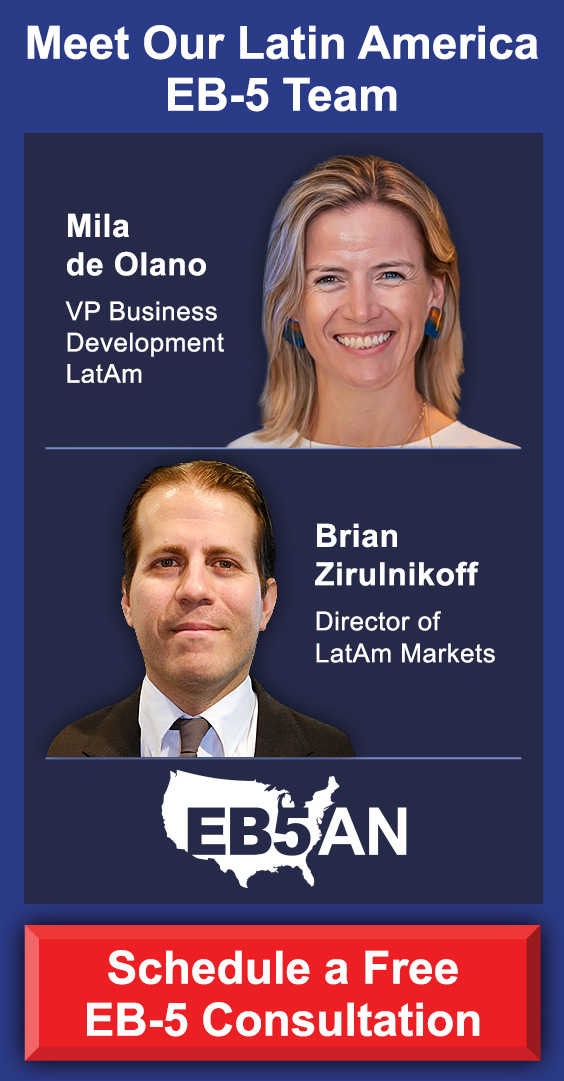Unlike many “golden visa” programs sponsored by other countries, the EB-5 Immigrant Investor Program does not simply sell U.S. Green Cards to foreign nationals. Instead, the EB-5 program requires applicants to invest in a qualifying U.S. commercial enterprise (generally real estate projects).
Instead of EB-5 funds being simply exchanged for U.S. Green Cards, EB-5 applicants are truly investors, open to both financial losses and significant gains.
EB-5 applicants who do market research and select a financially strong EB-5 project often receive their entire invested funds back—along with any accrued returns as set out in the project’s offering documents.
As an EB-5 investor, your chances of recovering your invested funds—and even gaining returns—at the end of the investment term largely depend on your project’s financial performance. To help investors evaluate better their chances, EB5AN has prepared a wealth of resources for selecting a low-risk EB-5 project and assessing its financial strength.
But once an EB-5 project succeeds financially and the investment term ends, how exactly are the funds returned from the project to the EB-5 investors?
In most cases, EB-5 investors are repaid through a redemption. The redemption process gives investors a clear, contractual way to exit a private fund and have their capital returned. Rather than waiting on asset sales or profit distributions, a redemption agreement spells out exactly when and how an investor’s interest is cancelled and cash is wired back.
In this post, we analyze the redemption process, step by step. This review will help both current and prospective EB-5 investors prepare for repayment and familiarize themselves with the basic structure of an EB-5 deal.
Background: How EB-5 Capital Works
Redemptions in the EB-5 Industry
- Execution of the Redemption Agreement
- Timing and the Redemption Date
- Warranties, Release, and Indemnification
Benefits of Repayment Through Redemption
Background: How EB-5 Capital Works
Before we discuss the redemption process, let’s go over the mechanics of the flow of EB-5 capital: how EB-5 funds go from the investor to the regional center, then to the EB-5 project and back.
An EB-5 investor begins by wiring the investment amount to an escrow account set up by their regional center’s investment fund. (Regional centers are USCIS-licensed entities that sponsor EB-5 real estate projects and manage the EB-5 capital related to these projects.)
The regional center’s investment fund, set up specifically for each EB-5 project, is known in the EB-5 program as the new commercial enterprise (NCE).
NCEs are typically structured as either limited partnerships or limited liability companies (LLCs). EB-5 investors serve as limited partners or members, and the regional center’s principals serve as general partners or managing members of the NCE.
If an EB-5 fund is a limited partnership, each EB-5 investor purchases partnership interests to become a limited partner in the fund. If the EB-5 fund is an LLC, each EB-5 investor purchases equity interests to become a member of the LLC.
The funds will leave escrow according to the terms of the offering documents signed by the EB-5 investor and the loan or equity agreement between the NCE and the EB-5 project entity.
In the EB-5 program, the project entities that receive investors’ funds are known as job-creating entities (JCEs). The NCE can either make a loan to the JCE or make an equity investment directly into the JCE.
The timing of the repayment of the EB-5 funds by the JCE back to the NCE depends on the particular terms of the loan or equity arrangement. Of course, the EB-5 funds will only be repaid to the NCE if the EB-5 project succeeds financially and has generated sufficient revenue.
The exit strategy for repayment also varies. It may involve the sale of the investor’s interest in the project at fair market value. Or an equity-based investment might instead involve only annual distributions of investment returns proportional to the investor’s ownership interest in the entity.
If financially successful, the JCE will repay the loaned investment or equity purchase at maturity using revenue from operations, the sale of the business, or other sources.
The NCE will now hold the EB-5 investors’ funds, plus any accrued returns.
But how exactly will the NCE repay the EB-5 investors themselves? As mentioned at the outset, NCEs typically repay their EB-5 investors through a redemption.
Redemptions in the EB-5 Industry
Again, for EB-5 investors to recover their funds from the NCE, the EB-5 project must first have been financially successful and repaid the funds to the NCE. For the redemption process described below, we will assume that this is the case.
In essence, a redemption involves the EB-5 investors giving up their partnership unit in the NCE and receiving their repayment in exchange.
The redemption process begins when the investor and the NCE’s general partner execute a redemption agreement that formally ends the investor’s status as a limited partner or member. The redemption agreement obligates the NCE to return capital under specified terms. From signing this agreement onward, every step of the redemption process moves forward to ensure the investor gets paid and the NCE’s records are updated without delay.
Execution of the Redemption Agreement
As soon as both parties sign, the agreement’s “effective date” locks in the commitments. The investor hands over a resignation of partnership status, and the NCE confirms its authority to redeem the interest. This document names the exact redemption amount—typically a fixed sum—so neither side must negotiate price adjustments later. It also sets out the deadline for repayment.
Before the NCE can wire the funds, each investor must typically provide identifying documents, wire instructions, and proof that they have no pending I-526E petitions.
Timing and the Redemption Date
In a redemption agreement, the “redemption date” is the day on which the NCE must deliver payment.
On that date, the investor’s partnership interest is automatically and irrevocably cancelled. At that moment, the NCE updates its internal books, and the investor ceases to have any ownership rights, capital account, or future distributions.
The redemption agreement furthermore spells out a flat purchase price with no proration or post-closing adjustments. The NCE wires that exact sum in U.S. dollars to the account the investor designated. Because the amount is fixed, both sides know exactly what to expect.
If any withholding is required by law (e.g., for taxes or partnership audit liabilities), the NCE notifies the investor in advance and deducts the necessary amount before wiring the net proceeds.
Under U.S. tax rules, the investor bears income-tax liability on any gain or preferred return. The NCE has the right to withhold amounts necessary to satisfy IRS requirements and remit those sums to the proper authorities.
Warranties, Release, and Indemnification
Both parties give warranties to protect against hidden claims:
- The investor warrants that they 1) own the interest free and clear of liens, 2) have authority to resign, and 3) hold no conflicting obligations.
- The NCE warrants that 1) the agreement is valid and enforceable and 2) paying the redemption amount won’t breach any other agreements.
When the investor accepts the wire, they give a full release of all past, present, and future claims against the partnership and its managers, affiliates, and advisors. If the investor violates any term—such as failing to withdraw a petition or returning confidential materials improperly—they must indemnify the partnership for any resulting losses, expenses, or attorneys’ fees.
The entire redemption transaction remains strictly confidential, aside from disclosures required by law. Both investors and the NCE agree not to publicize the agreement’s terms.
If any further acts or documents are needed to complete the redemption, both parties agree to cooperate and execute them promptly.
Benefits of Repayment Through Redemption
By laying out every step, condition, and deadline in a single document, the redemption process removes uncertainty. The investor knows exactly what to deliver to the regional center, when they’ll get paid, and how much. The NCE knows exactly what it owes and when. Then, once payment clears, the investor’s rights terminate, and both sides enjoy clean-break protections.
This level of transparency is key in EB-5 projects—investors must be confident that their capital will return once they and their investment have met all USCIS requirements and the project generates liquidity.
“We structure our EB-5 deals in a way that mitigates uncertainty as much as possible for our investors,” explains Sam Silverman, managing partner of EB5AN. “A redemption is a straightforward mechanism to repay investors. As long as an EB-5 project succeeds financially, our investors can expect a timely repayment.”
By structuring projects in this way, EB5AN has helped more than 2,700 families from 70+ countries relocate to the U.S. as lawful permanent residents. We offer a portfolio of top-tier, low-risk EB-5 regional center projects with a 100% USCIS project approval rate.
For further information on making a successful EB-5 investment, schedule a free consultation with EB5AN.







